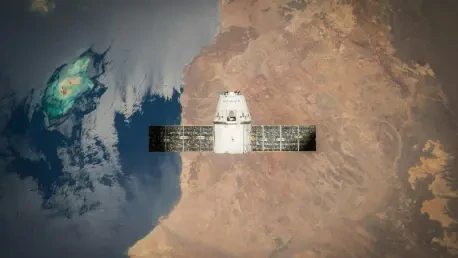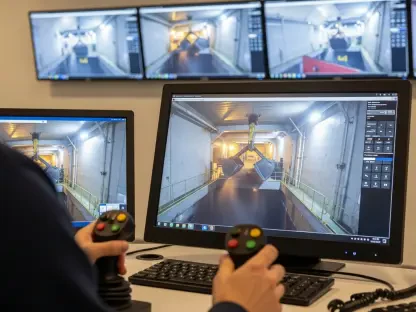In a bold stride towards advancing space technology, Australia has embarked on an ambitious journey to launch a new Low Earth Orbit (LEO) satellite by early 2028. This initiative is led by an Optus-led consortium and involves pivotal actors like the iLAuNCH Trailblazer, High Earth Orbit Robotics (HEO), Inovor Technologies, and the Australian Department of Defence’s Defence Science and Technology Group (DSTG). This collaborative endeavor aims to enhance Australia’s space-based capabilities, reflecting a growing global interest in mastering LEO satellite technology. By integrating advanced equipment and pioneering research, this project seeks to bolster national security, economic viability, and technological innovation.
Collaborative Efforts and Innovation
Integration of Cutting-Edge Technologies
The foremost component of this pioneering project is the integration of two groundbreaking pieces of equipment designed to push the boundaries of space exploration. The first piece of equipment is a sophisticated 20cm Adler Imager developed in collaboration with the University of Southern Queensland. This non-earth imaging device is expected to deliver vital defense, intelligence, and civilian insights regarding space objects. Such capabilities are deemed critical for understanding and analyzing space debris and other celestial phenomena, providing Australia an edge in space domain awareness. With the escalating importance of satellite observations in defense and civilian sectors, this innovation stands out as a crucial development.
The second significant technology involves a compact communication terminal engineered by the University of South Australia. This terminal is crafted to facilitate data transmission utilizing both optical and radio frequencies, intending to revolutionize the way data is handled and communicated from space. The blending of optical and radio frequencies aims to increase data throughput, ensuring efficient communication channels between space and earth operations. Together, these technological marvels encapsulate Australia’s commitment to leveraging scientific advancements to propel its space exploration capabilities further, emphasizing the integration of cutting-edge technologies as a cornerstone of the project.
The Role of Public-Private Partnerships
This venture does not stand alone; it echoes a broader trend of fostering collaborations between public, private, and academic sectors. The mutual efforts between these sectors highlight the value of partnerships in advancing technological capabilities, offering diverse perspectives and expertise. Previous collaborations, such as those with the Australian National University (ANU), Optus, and Leonardo UK, have paved the way for exploring multi-orbit pathways and refined satellite communications research. These partnerships are critical in aligning Australia’s space objectives with global standards, ensuring competitive footing in the international arena. By collaborating with a spectrum of partners, this initiative showcases the importance of shared goals and resources in achieving monumental scientific breakthroughs.
Implications for Australia’s Space Agenda
Strengthening National Security and Connectivity
The development of the sovereign LEO satellite bears significant implications for enhancing national security and connectivity. In an age where space security is intrinsically linked to ground security, having independent satellite capabilities is seen as pivotal for strategic autonomy. The LEO satellite will enhance Australia’s ability to monitor space activities, detecting potential threats and ensuring a protective frontier in the cosmos. These enhanced capabilities are expected to contribute to the national security framework, granting the nation a robust tool for addressing emerging space challenges.
On the connectivity front, the implications of this initiative are equally profound. By advancing satellite-based communication systems, the project aims to cater to the ever-increasing demand for robust, reliable connectivity, especially in remote regions. The satellite’s ability to provide sustained, high-bandwidth communication will play a vital role in bridging the digital divide, enabling equitable access to information and resources across the country. This mission emphasizes connectivity as a fundamental enabler of modern society, reinforcing the importance of resilient communication systems in driving economic and social progress.
Future Prospects and Challenges
While this venture marks a significant milestone in Australia’s space endeavors, it also sets the stage for exploring future prospects and challenges inherent in LEO satellite technology. As Australia advances its capabilities, it must navigate the complexities of space regulations and the environmental concerns surrounding satellite proliferation. Sustainable satellite management and debris mitigation will be crucial in ensuring the longevity and sustainability of space operations. Moreover, as competition in the global space sector intensifies, maintaining a cutting-edge approach through continuous innovation and adaptation will be essential for long-term success.
The path forward involves not only technological advancements but also strategic policy implementations that foster a conducive environment for space exploration. By continuing to cultivate expertise and investment in this field, Australia is set to carve a formidable presence on the global stage, contributing to the advancement of human knowledge and the peaceful exploration of outer space.
Paving the Way Forward
Australia is taking significant steps to advance its space technology with plans to launch a Low Earth Orbit (LEO) satellite by 2028. This initiative is spearheaded by a consortium led by Optus and includes key players such as iLAuNCH Trailblazer, High Earth Orbit Robotics (HEO), Inovor Technologies, and the Defence Science and Technology Group (DSTG) from the Australian Department of Defence. The collaboration is designed to strengthen Australia’s space-based capabilities and comes amid a growing international focus on LEO satellite technology. The project integrates state-of-the-art equipment and innovative research, aiming to boost national security, economic prospects, and technological advancements. As countries worldwide scramble to enhance their presence and capabilities in space, Australia’s bold endeavor promises to position it as a formidable participant in the global space race, while also contributing to the broader landscape of space exploration and development.









